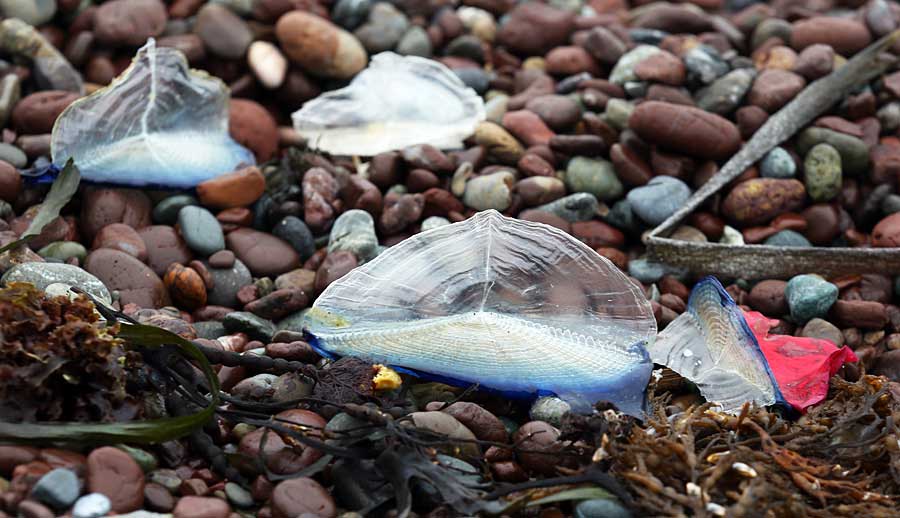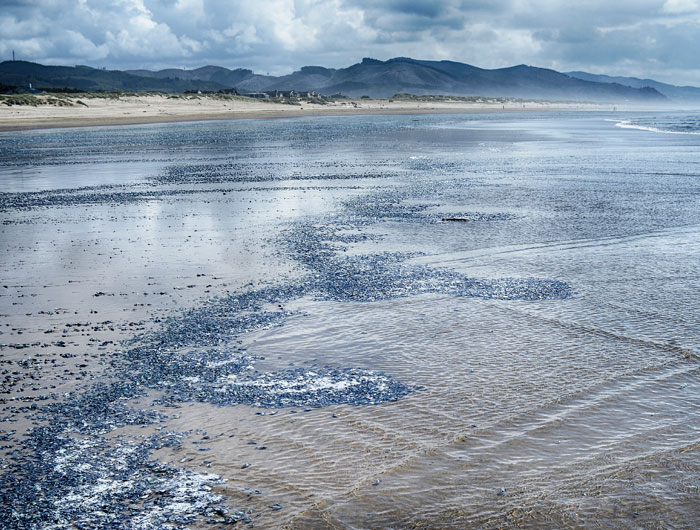In recent weeks, millions – and perhaps billions – of beautiful small blue jellyfish-like creatures have washed up on California beaches. If you’ve been down to the beach lately you may have seen a few, or in some cases, found the beach carpeted with them.
The Velella velella (yes, the species shares the same name as the genus) are free-floating hydrozoans which live offshore and on the surface of the water. Each individual Velella velella is in fact a hydroid colony, and most measure less than about 7 cm long. They are usually deep blue in color at their base with a clear sail on top that catches the wind and propels them over the surface of the sea. Under certain wind conditions, they may be stranded by the thousand on beaches, which is exactly what is happening now.
Velella are dependent on winds which push them along, and use their small crest running along them which acts like a sail. They’re sometimes called sea rafts, by-the-wind sailors, purple sails, little sails, or simply Velella. Having no means of locomotion other than their single sail, Velella are at the mercy of prevailing winds for moving around the seas, and are thereby also subject to mass-strandings on beaches throughout the world. This appears to be what is happening in California, and they can be found on beaches from San Diego to north of the Oregon border.
While it’s not necessarily the case right now, warmer waters associated with a build up to an El Niño year can stimulate greater production of new baby Velella out in the ocean. They can grow and reproduce very quickly and produce large numbers of offspring when the conditions are just right – calm conditions and plenty of food are all factors in their reproduction. Therefore when conditions are ripe their numbers can suddenly erupt. They are short lived, however – they generally survive less than a year at sea.
For years, such sightings of Velella have prompted different concerns and reactions. In 2002, when millions of the animals clumped up along the Bay Area coastline, the U.S. Coast Guard feared that there might have been an oil spill offshore. It has been several years had passed since a similar event in Northern California.
One thing is clear: A velella can’t survive on the beach for very long. If they get washed on shore and the next wave draws them back out, they’ll probably survive. Since they have no mechanism to retain water, they’re likely to die within an hour or two if washed ashore.Unlike jellyfish, the velella does not go underwater. Instead, it uses its tentacles to reach down and capture things to eat.
If you’re out diving, take a look in the sand at the water’s edge and you may have a chance to see these beautiful, but stranded, creatures.


